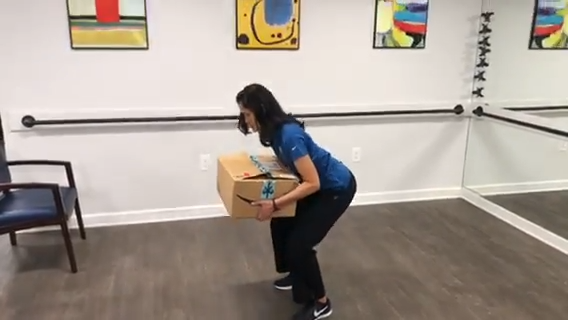
Share Post:
Lifting objects, whether heavy or light, is a part of daily life both at work and at home. But improper lifting can lead to serious back injuries, disrupting your everyday activities and causing long-term health issues.
I’ve learned some key techniques over the years that have helped me avoid back pain and ensure that I’m taking care of my body while handling objects. Let’s explore these methods together so you can stay safe and healthy.
Table of Contents
ToggleThe Basics of Proper Lifting
Get Close to the Load
One of the simplest yet most effective strategies is to get as close as possible to whatever you are picking up. Imagine giving the object a hug—this keeps it close to your body, significantly reducing the strain on your lower back.
Maintain Your Natural Curves
Your body’s natural posture includes a slight curve in the spine, and maintaining this while lifting is crucial. When preparing to lift, position yourself in an upright stance and perform a squat to reach the object. This stance ensures that your spine stays aligned and supported throughout the lift.
Engaging your core is vital when lifting. Before you lift, tighten your stomach muscles—these act like a natural corset for your spine. Remember, breathing is important too; don’t hold your breath while tightening your muscles.
Advanced Lifting Techniques
Lift with Your Legs
The legs are the powerhouse of your body. When lifting, bend at the knees and use the strength of your legs to rise.
This technique takes the pressure off your lower back and places it on your thigh muscles, which are more than equipped to handle heavy loads.
A common mistake people make is twisting the back while holding a heavy object. The spine isn’t designed for sharp twisting movements under load. Instead, pivot with your feet. If you need to turn while carrying the load, move your feet in the direction you want to go, keeping your hips and shoulders aligned. This method protects your back by ensuring the spine moves naturally and safely. This poor posture puts immense pressure on the lower back, especially the lumbar region, which is not equipped to handle heavy loads in this alignment. Trying to lift too much at once can easily lead to muscle strain and even more severe musculoskeletal injuries. It’s often more practical and safer to make several smaller trips than one that might hurt you. Overloading not only jeopardizes your back but also can lead to imbalanced lifting, where one side of your body takes on more load than the other, potentially causing asymmetrical injuries. Evaluate what you can comfortably carry, and don’t hesitate to ask for help with heavier items. If you find yourself injured due to overloading, consulting a lawyer for back injuries can provide guidance on potential claims for workplace accidents or improper training scenarios. When you rush, your body’s alignment may be compromised, increasing stress on all the wrong places. Ensure you assess the weight and your path before lifting; a clear, unhurried approach leads to safer and more effective handling of objects. Real-Life Application: At Work and Home Consider you’re tasked with moving supplies in a storeroom. Each item varies in weight and size. By applying the lifting techniques, you not only keep your back safe but also maintain a higher level of productivity. For very heavy or bulky items, always consider using mechanical aids like a dolly or forklift. If these aren’t available, practicing team lifts can distribute the weight more evenly and make the task easier.
Pivot, Don’t Twist
Common Mistakes to Avoid

Lifting with a Rounded Back
Overloading
Rushing
At Work
At Home
At home, you might not think much about lifting technique when moving a sofa or carrying groceries, but these everyday tasks can quickly lead to back strain if not handled properly. When rearranging furniture, take your time to clear a path and plan your moves ahead.
FAQs
Wrapping It Up
Lifting isn’t just about getting the job done. It’s about doing it safely and smartly. Each time you lift, take a moment to prepare and think about protecting your back. These extra seconds spent can save you from days, or even months, of potential pain and discomfort. Stay safe, and remember to lift smart!
Related Posts:
- How to Get Rid of Back Fat! - The Best Exercises to…
- Sports Injuries That Take Years to Heal (and How to…
- How to Handle Common Running Injuries? Preventative…
- Top 18 Strangest Gym Injuries You Won't Believe Happened
- Should You Lift Weights to Get Lean? What Works for…
- Even Small First Results in A Gym that Only You See…













